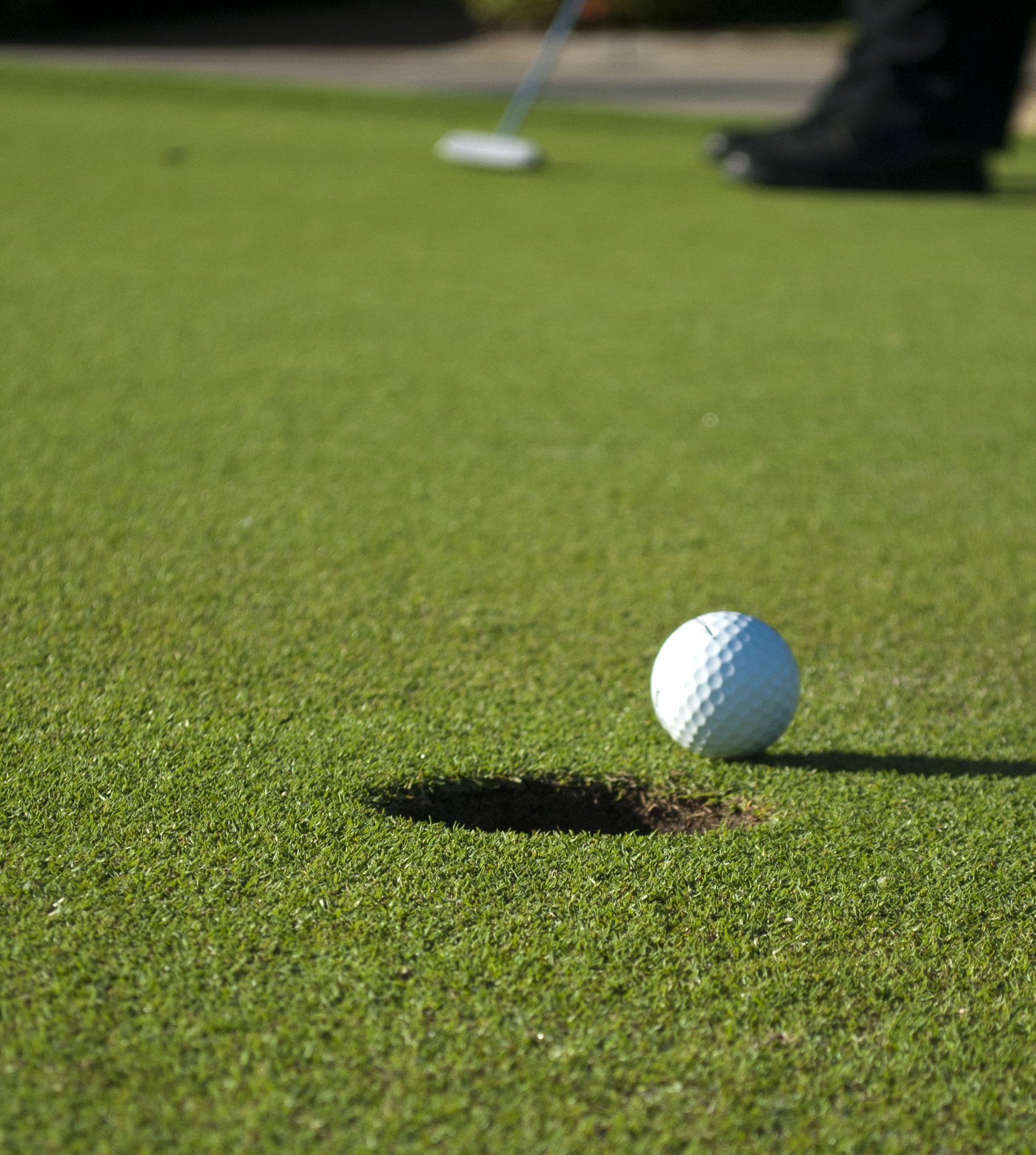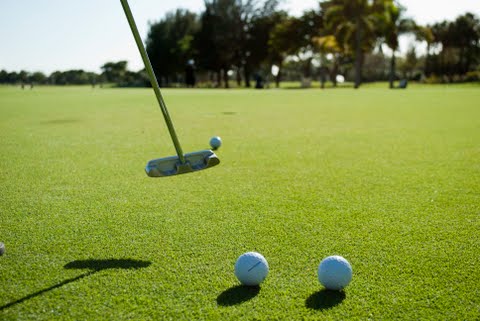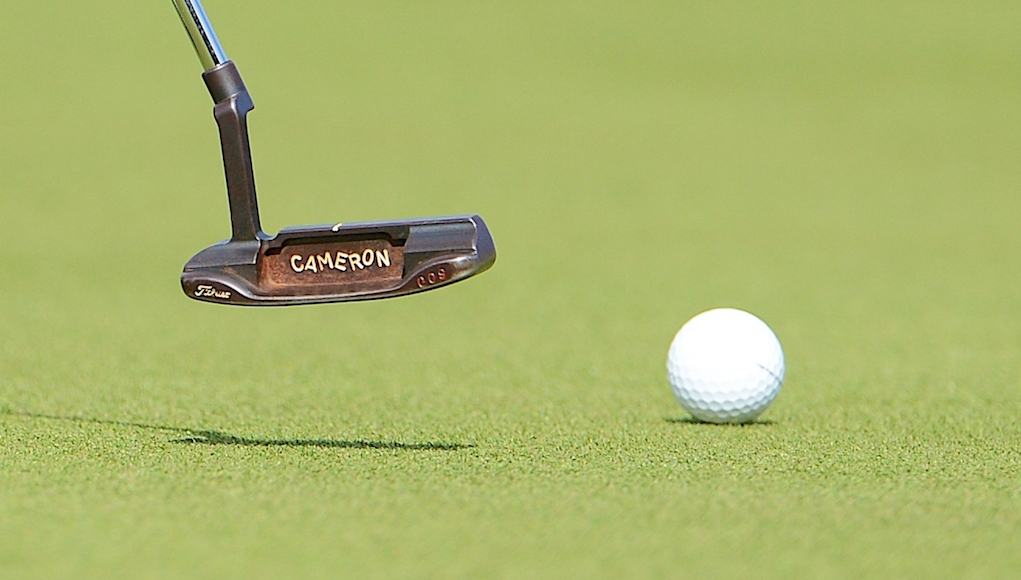Instruction
Why you shouldn’t lag putt

Frank Akey has been a teaching professional specializing in the short game since 1989, having taught students that ranged from raw beginners through mini-tour players, all ages, male and female. He served served as the Short Game Director for a major golf school for a brief time as well. His career prior to golf was in the weapons/tactics field, also as an instructor, so teaching accuracy seems to follow him.
I have some Core Beliefs and Absolutes when it comes to putting and the short game in general. This article is related to putting, so here are my “absolutes:”
- Only two things can happen when you stroke a putt, no matter if it is a 1 footer or a 100 footer … you make it or you miss it, it is that simple.
- Only two things you can have control of when you stroke a putt … you roll it on the line you intended and you roll it the speed you intended, also that simple.
- You can make EVERY putt that you look at, no matter how long or how many breaks in the putt, BUT, not all putts will go in.
- Imagination and feel is more important than having pure mechanics.
- DO NOT LAG PUTT!!
Now, having said that, I can already hear the people yelling, “Blasphemy!” and “This guy is a flake/moron/idiot …” Or whatever description comes to mind, so let me expand a little on each of the above absolutes.
Let’s tackle the lag putt. This subject matter could take pages of discussion, but I will keep it short and sweet for the purpose of this article. My reasoning for teaching my students NOT to lag putt is more by definition of what most, including the majority of TV announcers, define as lag putting. When I hear someone say that the golfer is just trying to get the ball within a 5-foot circle, or that they would be happy if they kept the ball within X amount of feet, it drives me crazy! I am ALWAYS looking to MAKE the putt, no matter how many breaks, how far, degree of difficulty … I want the ball to stop within the magical 4.25” circle…the hole. There will always be a line and speed combination that will allow the ball to go in, and sometimes there is more than one combination that will work. Using the other definition, a lag putt is an intentionally missed putt that hopefully is close enough for an easy next putt. Using that logic, on a tough driving hole, do you lag drive hoping to keep the ball within 40 yards of the fairway? How about from the middle of the fairway 120 yards out, do you lag approach just trying to keep the ball within 40 yards of the green? Putting is all about confidence, and a lag putt is a lack of confidence in either your first putt or the ability to make the second putt from wherever the first putt stops.
That takes us to knowing you can make any putt that you look at, yet, not all putts will go in. That is the confidence that you build by practicing all kinds of putts, long and short, straight and breaking, uphill and downhill. Once you start seeing a lot of putts falling, your confidence starts to increase on those types of putts. Now when you have a 50 foot putt, you aren’t worried if you miss knowing you will make the next one, so you will start trying to make the longer putts. Believe it or not, they will occasionally go in … whodathunkit? It is a simple theory, but once you lose confidence in your putting, your chances of making anything dwindle dramatically. What some do not realize, is that a perfectly struck putt on a perfectly manicured green on a perfectly straight line will go in perfectly dead center … but not 100% of the time. The ball can have very slight imperfections that cause the ball to veer off line. The blades of grass are growing by the millisecond, and a small grain of sand may move ever-so-slightly and knock the ball off line. Something can make the ball take a small hop, which will change the roll and possibly alter the path. On the flip side, those same things can happen to a putt that is slightly OFF line and end up causing the ball to take the CORRECT line and go in … have you ever had that happen to you? It has happened to me.
My absolute that says only two things can happen is pretty much self-explanatory. After you strike a putt, the only results are a missed putt or a made putt. There isn’t really much than can be expanded on, so let’s look at this absolute’s cousin, only two things that you can control … speed and line. If after spending time reading the putt, you determine the line you think the ball must roll on, you can control whether or not you roll it on that intended line. Also, after determining what speed you think is necessary for the putt to go in, you can control the pace of your stroke to produce that speed. At the end of the putt, your ball rolling on your intended line on your intended speed will have done one of two things … you made it or you missed it.
The last of the absolutes is more of an opinion than a scientific fact. I believe that you will be more successful at putting if you have a good imagination in visualizing how the putt will roll, and able to use feel to duplicate that visualization. One cannot be taught either, but both can be developed. One of the methods I use in teaching imagination and visualization is to have you look at the green as if it were a hard, shiny solid sheet of granite. Seeing the undulations in the granite, if you were to roll the ball like a marble, how would the ball react to the various slopes and breaks? To help a student develop better feel, I have them stand on the green facing the hole, hold the golf ball in their dominate hand using only the thumb, index finger, and middle finger, and roll the golf ball to the hole, trying to get it to stop as it falls into the hole. After a few successful rolls, they then will take their putting stance and repeat the procedure. Some students are continually doing these things as drills when their putting goes sour.
Next time we will go into the hot topic of standard vs. belly vs. broom/long putters and how to determine which is best for you … if the USGA will let us. Until then.
Click here for more discussion in the “Instruction & Academy” forum.
Instruction
The Wedge Guy: Beating the yips into submission

There may be no more painful affliction in golf than the “yips” – those uncontrollable and maddening little nervous twitches that prevent you from making a decent stroke on short putts. If you’ve never had them, consider yourself very fortunate (or possibly just very young). But I can assure you that when your most treacherous and feared golf shot is not the 195 yard approach over water with a quartering headwind…not the extra tight fairway with water left and sand right…not the soft bunker shot to a downhill pin with water on the other side…No, when your most feared shot is the remaining 2- 4-foot putt after hitting a great approach, recovery or lag putt, it makes the game almost painful.
And I’ve been fighting the yips (again) for a while now. It’s a recurring nightmare that has haunted me most of my adult life. I even had the yips when I was in my 20s, but I’ve beat them into submission off and on most of my adult life. But just recently, that nasty virus came to life once again. My lag putting has been very good, but when I get over one of those “you should make this” length putts, the entire nervous system seems to go haywire. I make great practice strokes, and then the most pitiful short-stroke or jab at the ball you can imagine. Sheesh.
But I’m a traditionalist, and do not look toward the long putter, belly putter, cross-hand, claw or other variation as the solution. My approach is to beat those damn yips into submission some other way. Here’s what I’m doing that is working pretty well, and I offer it to all of you who might have a similar affliction on the greens.
When you are over a short putt, forget the practice strokes…you want your natural eye-hand coordination to be unhindered by mechanics. Address your putt and take a good look at the hole, and back to the putter to ensure good alignment. Lighten your right hand grip on the putter and make sure that only the fingertips are in contact with the grip, to prevent you from getting to tight.
Then, take a long, long look at the hole to fill your entire mind and senses with the target. When you bring your head/eyes back to the ball, try to make a smooth, immediate move right into your backstroke — not even a second pause — and then let your hands and putter track right back together right back to where you were looking — the HOLE! Seeing the putter make contact with the ball, preferably even the forward edge of the ball – the side near the hole.
For me, this is working, but I am asking all of you to chime in with your own “home remedies” for the most aggravating and senseless of all golf maladies. It never hurts to have more to fall back on!
Instruction
Looking for a good golf instructor? Use this checklist

Over the last couple of decades, golf has become much more science-based. We measure swing speed, smash factor, angle of attack, strokes gained, and many other metrics that can really help golfers improve. But I often wonder if the advancement of golf’s “hard” sciences comes at the expense of the “soft” sciences.
Take, for example, golf instruction. Good golf instruction requires understanding swing mechanics and ball flight. But let’s take that as a given for PGA instructors. The other factors that make an instructor effective can be evaluated by social science, rather than launch monitors.
If you are a recreational golfer looking for a golf instructor, here are my top three points to consider.
1. Cultural mindset
What is “cultural mindset? To social scientists, it means whether a culture of genius or a culture of learning exists. In a golf instruction context, that may mean whether the teacher communicates a message that golf ability is something innate (you either have it or you don’t), or whether golf ability is something that can be learned. You want the latter!
It may sound obvious to suggest that you find a golf instructor who thinks you can improve, but my research suggests that it isn’t a given. In a large sample study of golf instructors, I found that when it came to recreational golfers, there was a wide range of belief systems. Some instructors strongly believed recreational golfers could improve through lessons. while others strongly believed they could not. And those beliefs manifested in the instructor’s feedback given to a student and the culture created for players.
2. Coping and self-modeling can beat role-modeling
Swing analysis technology is often preloaded with swings of PGA and LPGA Tour players. The swings of elite players are intended to be used for comparative purposes with golfers taking lessons. What social science tells us is that for novice and non-expert golfers, comparing swings to tour professionals can have the opposite effect of that intended. If you fit into the novice or non-expert category of golfer, you will learn more and be more motivated to change if you see yourself making a ‘better’ swing (self-modeling) or seeing your swing compared to a similar other (a coping model). Stay away from instructors who want to compare your swing with that of a tour player.
3. Learning theory basics
It is not a sexy selling point, but learning is a process, and that process is incremental – particularly for recreational adult players. Social science helps us understand this element of golf instruction. A good instructor will take learning slowly. He or she will give you just about enough information that challenges you, but is still manageable. The artful instructor will take time to decide what that one or two learning points are before jumping in to make full-scale swing changes. If the instructor moves too fast, you will probably leave the lesson with an arm’s length of swing thoughts and not really know which to focus on.
As an instructor, I develop a priority list of changes I want to make in a player’s technique. We then patiently and gradually work through that list. Beware of instructors who give you more than you can chew.
So if you are in the market for golf instruction, I encourage you to look beyond the X’s and O’s to find the right match!
Instruction
What Lottie Woad’s stunning debut win teaches every golfer

Most pros take months, even years, to win their first tournament. Lottie Woad needed exactly four days.
The 21-year-old from Surrey shot 21-under 267 at Dundonald Links to win the ISPS Handa Women’s Scottish Open by three shots — in her very first event as a professional. She’s only the third player in LPGA history to accomplish this feat, joining Rose Zhang (2023) and Beverly Hanson (1951).
But here’s what caught my attention as a coach: Woad didn’t win through miraculous putting or bombing 300-yard drives. She won through relentless precision and unshakeable composure. After watching her performance unfold, I’m convinced every golfer — from weekend warriors to scratch players — can steal pages from her playbook.
Precision Beats Power (And It’s Not Even Close)
Forget the driving contests. Woad proved that finding greens matters more than finding distance.
What Woad did:
• Hit it straight, hit it solid, give yourself chances
• Aimed for the fat parts of greens instead of chasing pins
• Let her putting do the talking after hitting safe targets
• As she said, “Everyone was chasing me today, and managed to maintain the lead and played really nicely down the stretch and hit a lot of good shots”
Why most golfers mess this up:
• They see a pin tucked behind a bunker and grab one more club to “go right at it”
• Distance becomes more important than accuracy
• They try to be heroic instead of smart
ACTION ITEM: For your next 10 rounds, aim for the center of every green regardless of pin position. Track your greens in regulation and watch your scores drop before your swing changes.
The Putter That Stayed Cool Under Fire
Woad started the final round two shots clear and immediately applied pressure with birdies at the 2nd and 3rd holes. When South Korea’s Hyo Joo Kim mounted a charge and reached 20-under with a birdie at the 14th, Woad didn’t panic.
How she responded to pressure:
• Fired back with consecutive birdies at the 13th and 14th
• Watched Kim stumble with back-to-back bogeys
• Capped it with her fifth birdie of the day at the par-5 18th
• Stayed patient when others pressed, pressed when others cracked
What amateurs do wrong:
• Get conservative when they should be aggressive
• Try to force magic when steady play would win
• Panic when someone else makes a move
ACTION ITEM: Practice your 3-6 foot putts for 15 minutes after every range session. Woad’s putting wasn’t spectacular—it was reliable. Make the putts you should make.
Course Management 101: Play Your Game, Not the Course’s Game
Woad admitted she couldn’t see many scoreboards during the final round, but it didn’t matter. She stuck to her game plan regardless of what others were doing.
Her mental approach:
• Focused on her process, not the competition
• Drew on past pressure situations (Augusta National Women’s Amateur win)
• As she said, “That was the biggest tournament I played in at the time and was kind of my big win. So definitely felt the pressure of it more there, and I felt like all those experiences helped me with this”
Her physical execution:
• 270-yard drives (nothing flashy)
• Methodical iron play
• Steady putting
• Everything effective, nothing spectacular
ACTION ITEM: Create a yardage book for your home course. Know your distances to every pin, every hazard, every landing area. Stick to your plan no matter what your playing partners are doing.
Mental Toughness Isn’t Born, It’s Built
The most impressive part of Woad’s win? She genuinely didn’t expect it: “I definitely wasn’t expecting to win my first event as a pro, but I knew I was playing well, and I was hoping to contend.”
Her winning mindset:
• Didn’t put winning pressure on herself
• Focused on playing well and contending
• Made winning a byproduct of a good process
• Built confidence through recent experiences:
- Won the Women’s Irish Open as an amateur
- Missed a playoff by one shot at the Evian Championship
- Each experience prepared her for the next
What this means for you:
• Stop trying to shoot career rounds every time you tee up
• Focus on executing your pre-shot routine
• Commit to every shot
• Stay present in the moment
ACTION ITEM: Before each round, set process goals instead of score goals. Example: “I will take three practice swings before every shot” or “I will pick a specific target for every shot.” Let your score be the result, not the focus.
The Real Lesson
Woad collected $300,000 for her first professional victory, but the real prize was proving that fundamentals still work at golf’s highest level. She didn’t reinvent the game — she simply executed the basics better than everyone else that week.
The fundamentals that won:
• Hit more fairways
• Find more greens
• Make the putts you should make
• Stay patient under pressure
That’s something every golfer can do, regardless of handicap. Lottie Woad just showed us it’s still the winning formula.
FINAL ACTION ITEM: Pick one of the four action items above and commit to it for the next month. Master one fundamental before moving to the next. That’s how champions are built.
PGA Professional Brendon Elliott is an award-winning coach and golf writer. You can check out his writing work and learn more about him by visiting BEAGOLFER.golf and OneMoreRollGolf.com. Also, check out “The Starter” on RG.org each Monday.
Editor’s note: Brendon shares his nearly 30 years of experience in the game with GolfWRX readers through his ongoing tip series. He looks forward to providing valuable insights and advice to help golfers improve their game. Stay tuned for more Tips!























md
Jul 4, 2012 at 9:17 pm
I think he’s just refering to putting here not your entire course management. And all he’s really saying is if you believe you can make every putt you will try to make every one. If you do that, the result will be that you will generally be within that 3 foot circle alot more often. Its just the principal of setting specific goals not general ones.
Leroy Potgieter
Dec 15, 2017 at 12:17 pm
The point of lag putting for me is more about speed control. One should always go for the hole, but with precise power management so that misses become tap ins
nwri
Jun 20, 2012 at 6:05 pm
Lag Putting = Hitting Irons to the middle of the green imo. Some pins you just do not go for. Just like some putts you have to respect.
cwang
Mar 10, 2012 at 6:16 am
But isn’t there a big difference between leaving yourself 3 feet uphiller breaking toward you and a 3 foot downhiller breaking away from you? There’s a reason pros like to leave it below the hole on long putts…
Techvan4Life
Mar 9, 2012 at 12:51 am
I don’t know if I would agree with much of this article. The author asks if you would “lag” on a tough driving hole or “lag” from 120 yards out. Yes I do both, I’m not afraid to grab a 3 wood on a tough driving hole, or aiming away from a sucker pin to the center of the green. Shot placement from anywhere on the golf course is the equivalent to lag putting, I am intentionally not hitting the ball directly at the pin. Lag putting is an important part of the game that every player should know how to do successfully. It doesn’t have to be a complete putting philosophy but if you remove it from your game you better be ready for some three putts, and the skill has saved my ass in a couple pressure situations. Since the author hates lag putting and calls the shot an intentional miss I can only assume he never plays a shot that could be considered an intentional miss. He goes for it in two on every par 5, never pitches out of trouble, hits low percentage shots all day long, and never lays up to a position, angle, or yardage that he might like. He aims directly at the pin, hits it and hopes that it goes in, like he said he is hoping the ball lands in the magical 4.25″ circle.
Leroy Potgieter
Dec 15, 2017 at 12:21 pm
Solid response, I agree
teddyt
Mar 7, 2012 at 1:10 pm
I think you may have a career in sports psychology … in teaching putting, the jury is still out.
David Fayard
Mar 6, 2012 at 1:09 pm
LOVE the article… I hope people keep believing to “get it close/LAG it” so I can keep beating them….